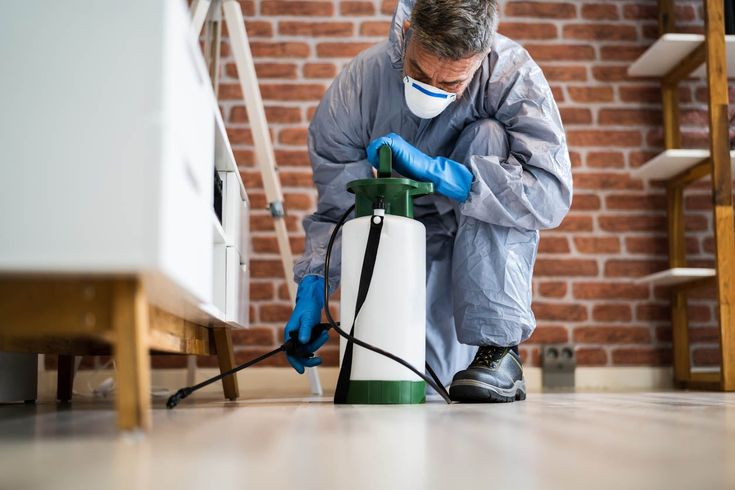Don’t Let Rodents Take Over: The Smart Approach to Staten Island Infestations

Rodents don’t just appear overnight—they build nests, multiply, and cause damage before you ever spot them. Here’s how early action saves homes and sanity.
The Silent Problem Lurking Behind the Walls
Rodents are rarely seen until the problem is serious. That’s part of what makes them so tricky. By the time a homeowner hears late-night scratching in the walls or finds chewed packaging in the pantry, an entire infestation may already be underway.
In places like Staten Island—where older homes, basements, and densely built neighborhoods provide plenty of hiding spots—this issue is especially common. Once rats or mice find a safe space and a food source, they settle in fast. And they don’t come alone.
While it’s tempting to handle the problem with a few traps or poison, the reality is that surface-level fixes rarely reach the root of the problem. Rodents nest in insulation, crawl spaces, and attics. They chew electrical wiring, create fire hazards, and spread bacteria like salmonella and hantavirus. And perhaps worst of all, they reproduce at alarming speed.
How Ignoring the Problem Makes It Worse
Some homeowners delay calling for professional help, hoping the issue resolves itself. But rodents don’t leave once they’ve moved in—they multiply, often undetected.
Here’s what commonly happens when rodent activity is left unaddressed:
- Structural damage from gnawed beams, wires, and insulation
- Health risks from urine and droppings contaminating air and food
- Worsening infestations as the population grows out of sight
- Attracting other pests like fleas, ticks, or even snakes that follow rodent trails
In Staten Island, winter especially forces rodents indoors. As the temperature drops, warm basements and cluttered garages become the perfect breeding ground. By spring, a family of mice can turn into hundreds.
That’s why acting early matters. And it’s also why professional help isn’t just helpful—it’s essential.
CASE STUDY: From Chaos to Control in Richmond, Staten Island
In early December, a family living in Richmond noticed something strange: tiny droppings behind their pantry and scratching noises in the ceiling. They initially set a few snap traps and assumed the issue would go away.
But the noises continued. Then, chewed wires caused their laundry machine to short-circuit. A quick online search led them to a local pest control team specializing in rodent services in Staten Island. Within 48 hours, a licensed technician conducted a full inspection.
What they discovered was shocking:
- A colony of mice had built multiple nests inside the attic insulation
- There were trails of droppings across floor joists
- Entry points were found behind the exterior HVAC vents
The pest control team implemented a multi-stage solution:
- Full removal of infested insulation
- Sanitization of contaminated areas
- Sealing all identified entry points
- Placement of tamper-proof bait stations in secure zones
Within two weeks, the home was rodent-free. More importantly, the technician educated the family on prevention tactics—like storing pet food in sealed containers, trimming overhanging trees, and keeping basement storage tidy.
Months later, a follow-up showed no return of rodent activity. It was a clean slate—and a reminder that acting early prevents long-term damage.
Why Prevention Is the Most Affordable Option
People often assume pest control is expensive. But the truth is: prevention is always cheaper than repair.
A rodent infestation can lead to thousands in repairs:
- Electrical rewiring
- HVAC duct replacement
- Mold removal from contaminated areas
- Replacing insulation and drywall
Compare that to the cost of professional rodent control, which includes:
- A full property inspection
- Safe, eco-friendly treatments
- Entry point sealing
- Prevention education and follow-ups
In neighborhoods with older construction and close-set housing—common in Staten Island—these services become even more critical. Rodent services in Staten Island are designed with these local challenges in mind. Technicians understand the architecture, weather patterns, and common hiding spots unique to the area.
The Hidden Link: Rodents and Termite Risk
What most homeowners don’t realize is how rodent problems can mask other serious pest threats—including termites.
Rodents disturb insulation and wooden structures. In doing so, they create moisture-rich, dark crevices where termites thrive. In fact, several pest control companies offering rodent services in Staten Island also double as termite exterminator Staten Island experts for this very reason.
It’s not uncommon for a pest inspection to start with mouse droppings and end with a termite warning.
That’s why integrated pest management (IPM) is so important. It doesn’t treat just one problem; it considers how one pest creates conditions for another. Whether it’s rats in the crawlspace or termites in the beams, homeowners deserve a long-term, comprehensive plan.
What to Look for in a Pest Control Partner
When choosing a company to handle rodents (and potentially termites), look for:
- Licensed and insured technicians with local experience
- Clear inspection and treatment plans
- Use of humane and eco-conscious methods
- Ongoing support or follow-up options
You want someone who knows Staten Island’s unique housing layouts, not just a national brand with a generic plan.
Take Action Before It Gets Worse
If you’ve seen even one sign of rodents—or just suspect something isn’t right—don’t wait. Rodents don’t go away on their own, and delaying action can lead to serious damage and unnecessary expense.
Contact a trusted expert in rodent services in Staten Island to schedule an inspection. And while you’re at it, ask about a dual evaluation with a termite exterminator Staten Island professional. Protecting your home means thinking ahead, not just reacting when things go wrong.


